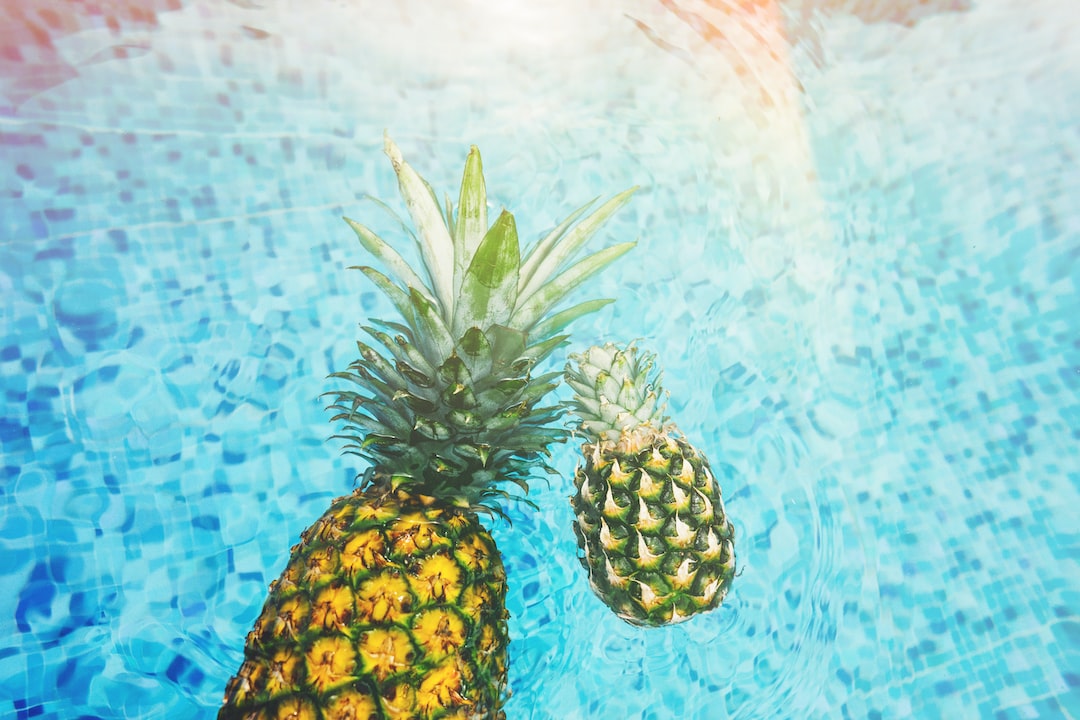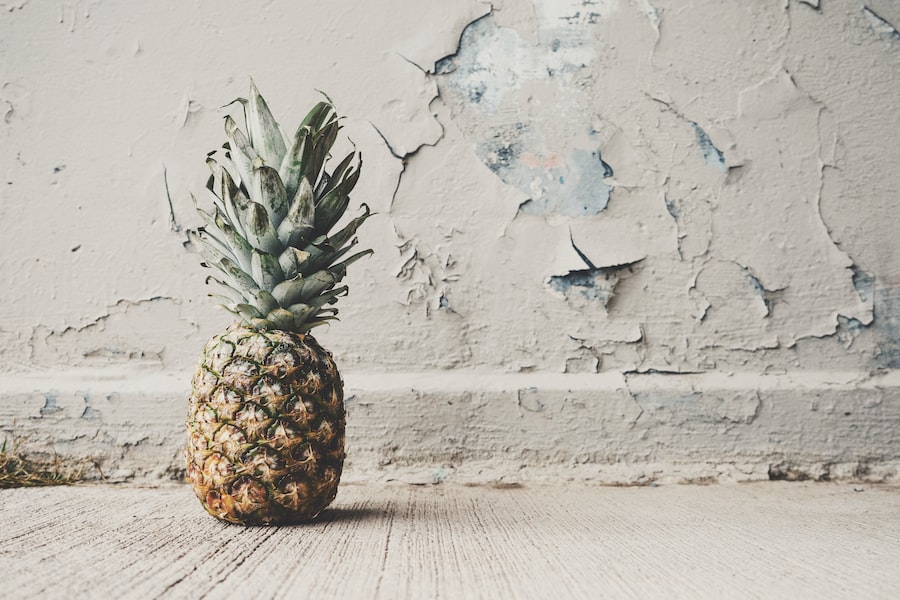How to Tell When Your Pineapple is Ripe and Ready to Pick

Pineapples are a tropical fruit known for their sweet and tangy flavor. They are a popular ingredient in many dishes and beverages, and are also enjoyed on their own as a refreshing snack. Understanding the growth cycle and ripeness indicators of pineapples is important for ensuring that you enjoy the fruit at its peak flavor and texture. In this article, we will explore the different stages of pineapple growth, the signs of maturity to look out for, and how to determine when a pineapple is ripe and ready to be enjoyed.
Key Takeaways
- Pineapples take about 18-24 months to grow from a seed to a mature fruit
- Timing is crucial when harvesting pineapples to ensure maximum sweetness and flavor
- Signs of maturity in pineapples include a change in color, size, and firmness
- The ideal color for ripe pineapples is a golden yellow with a slight green tint
- Checking the firmness of pineapples can indicate ripeness, with a slightly soft texture being ideal
Understanding the Pineapple’s Growth Cycle
The growth cycle of a pineapple can be divided into several stages. It starts with the planting of the pineapple crown, which is the leafy top of a mature pineapple fruit. The crown is planted in soil, where it takes root and begins to grow. Over the course of several months, the plant develops a strong root system and produces leaves.
Once the plant has reached maturity, it begins to produce a flower stalk, which eventually develops into a pineapple fruit. The fruit starts off small and green, and gradually grows larger and changes color as it ripens. The entire growth cycle of a pineapple can take anywhere from 18 to 24 months, depending on various factors such as climate and growing conditions.
Factors that affect the growth and development of pineapples include temperature, sunlight, soil quality, and water availability. Pineapples thrive in warm climates with temperatures between 60°F (15°C) and 90°F (32°C). They require at least six hours of direct sunlight each day to grow properly. The soil should be well-drained and rich in organic matter, with a pH level between 4.5 and 6.5. Adequate water is also essential for pineapple growth, but overwatering can lead to root rot.
The Importance of Timing When Harvesting Pineapples
Timing is crucial when it comes to harvesting pineapples. Harvesting too early can result in a fruit that is underripe and lacking in flavor. On the other hand, harvesting too late can lead to a fruit that is overripe and mushy. It is important to wait until the pineapple is fully mature before harvesting it, but not to wait too long.
Harvesting pineapples at the right time ensures that you enjoy the optimal flavor and texture of the fruit. A perfectly ripe pineapple should be sweet, juicy, and have a firm texture. It should not be too soft or mushy, as this indicates overripeness. By harvesting at the right time, you can maximize the sweetness and juiciness of the fruit.
Signs of Maturity in Pineapples
| Signs of Maturity in Pineapples | Description |
|---|---|
| Color | Golden yellow color indicates ripeness |
| Smell | Sweet aroma indicates ripeness |
| Leaves | Easily removable leaves at the top indicate ripeness |
| Texture | Firm but slightly yielding texture indicates ripeness |
There are several visual indicators that can help you determine if a pineapple is mature and ready to be harvested. One of the most obvious signs is a change in color. As a pineapple ripens, it changes from green to yellow or golden brown, depending on the variety. The color change usually starts at the base of the fruit and gradually spreads upwards.
In addition to color changes, a mature pineapple will also have a sweet aroma. You can smell the base of the fruit to check for a strong, sweet scent. If the pineapple has little to no aroma, it may not be fully mature yet.
Another indicator of maturity is the texture of the pineapple. A ripe pineapple should have a firm texture when gently squeezed. It should not be too soft or mushy, as this indicates overripeness.
Identifying the Ideal Color for Ripe Pineapples
The ideal color for a ripe pineapple depends on your desired level of sweetness. If you prefer a sweeter pineapple, look for one that has turned golden brown or even slightly orange in color. These pineapples tend to be sweeter and juicier. If you prefer a slightly less sweet pineapple, look for one that is still mostly yellow with a hint of green. These pineapples will have a slightly tangier flavor.
It is important to note that the color of a pineapple can vary depending on the variety and growing conditions. Some varieties may naturally have a more yellow or golden color, while others may be more green. The key is to look for a pineapple that has undergone a noticeable color change from its original green state.
Checking the Firmness of Pineapples for Ripeness

The firmness of a pineapple can also provide clues about its ripeness. To assess the firmness of a pineapple, gently squeeze it with your fingers. A ripe pineapple should have a slight give when squeezed, but should still feel firm overall. If the pineapple feels too soft or mushy, it may be overripe.
It is important to note that the firmness of a pineapple can vary depending on the variety and growing conditions. Some varieties may naturally be firmer than others, even when fully ripe. The key is to look for a pineapple that feels firm but not too hard or too soft.
Using the Smell Test to Determine Pineapple Ripeness
Your sense of smell can also help you determine if a pineapple is ripe and ready to be enjoyed. To assess the ripeness of a pineapple using your sense of smell, hold it up to your nose and take a deep breath. A ripe pineapple should have a strong, sweet aroma. If the pineapple has little to no aroma, it may not be fully mature yet.
The aroma of a pineapple can vary depending on the variety and growing conditions. Some varieties may naturally have a stronger aroma than others. The key is to look for a pineapple that has a noticeable sweet scent.
Observing the Crown of Pineapples for Ripeness Clues
The crown of a pineapple can provide clues about its ripeness. The crown refers to the leafy top of the fruit, which is attached to the stem. When a pineapple is fully mature, the crown should be green and healthy-looking. If the crown is brown or wilted, it may indicate that the pineapple is overripe or past its prime.
In addition to color, you can also assess the texture of the crown. A ripe pineapple should have a firm and plump crown. If the crown feels soft or mushy, it may be an indication that the pineapple is overripe.
Assessing the Size and Weight of Pineapples for Ripeness
The size and weight of a pineapple can also provide clues about its ripeness. A ripe pineapple should feel heavy for its size. This indicates that it is full of juice and has reached its maximum ripeness. If a pineapple feels light for its size, it may not be fully mature yet.
In terms of size, there is no specific rule for determining ripeness based on size alone. Pineapples can vary in size depending on the variety and growing conditions. The key is to look for a pineapple that feels heavy and has other signs of maturity, such as color change and aroma.
Tips for Harvesting Pineapples Without Damaging Them
When it comes to harvesting pineapples, it is important to handle them with care to avoid damaging the fruit. Here are some tips to help you harvest pineapples without causing any harm:
1. Use sharp pruning shears or a knife to cut the pineapple from the plant. Avoid pulling or twisting the fruit, as this can damage the plant and affect future growth.
2. Cut the pineapple as close to the base as possible, leaving a small portion of the stem attached to the fruit. This will help preserve its freshness and prevent rotting.
3. Handle the pineapple gently to avoid bruising or crushing the fruit. Place it in a basket or container lined with soft material, such as a towel or newspaper, to cushion it during transport.
4. Avoid stacking or piling pineapples on top of each other, as this can cause them to become squished and damaged. Instead, place them in a single layer to allow for proper air circulation.
Storing and Enjoying Your Perfectly Ripe Pineapple
Once you have harvested a perfectly ripe pineapple, it is important to store it properly to maintain its freshness. Here are some tips for storing and enjoying your ripe pineapple:
1. Store the pineapple at room temperature for up to two days. This will allow it to continue ripening and develop its full flavor. Avoid storing it in the refrigerator, as this can affect its texture and flavor.
2. If you need to store the pineapple for longer than two days, you can refrigerate it. Place the pineapple in a plastic bag or wrap it in plastic wrap to prevent moisture loss. It can be stored in the refrigerator for up to five days.
3. To enjoy your ripe pineapple, you can simply cut off the crown and base, and then slice off the skin. Cut the pineapple into desired shapes, such as rings or chunks, and remove the core if desired. The ripe pineapple can be eaten on its own, added to fruit salads, used as a topping for desserts, or blended into smoothies.
Understanding the growth cycle and ripeness indicators of pineapples is important for ensuring that you enjoy the fruit at its peak flavor and texture. By knowing when to harvest a pineapple and how to determine its ripeness, you can maximize its sweetness and juiciness. Visual indicators such as color changes, texture, and aroma can help you assess the maturity of a pineapple. Additionally, factors such as size and weight can provide further clues about ripeness. By following best practices for harvesting and storing pineapples, you can enjoy the perfect pineapple every time.



